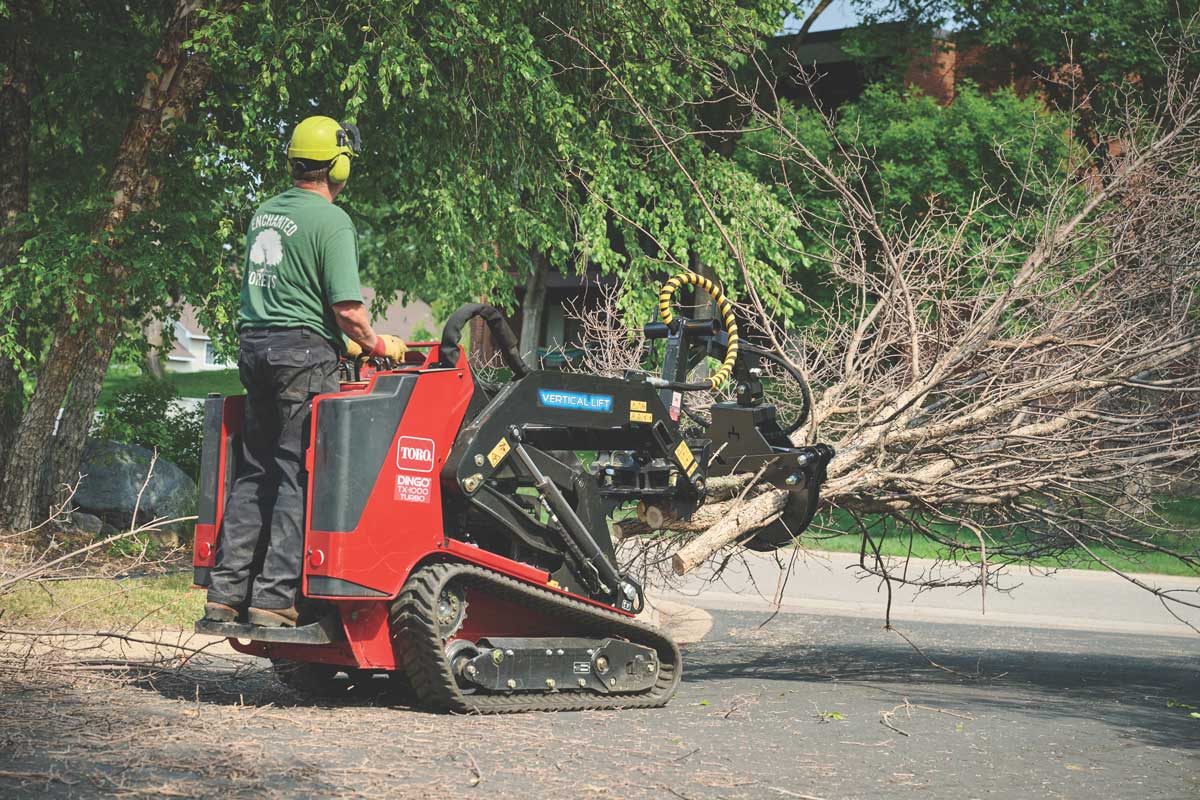Case Mini Track Loader Specs and Lineup Summary

The Brand-New TL100 Packs a Powerful Punch in a Compact Package
This post is a part of Compact Equipment‘s Compact Tool Carrier Spec Guide, which was featured in our March/April 2024 issue. View the magazine version of these summaries by clicking right here. Or sign up for the print edition right here. Now enjoy!
Leveraging 180 years of designing and building construction-grade equipment, Case Construction Equipment started manufacturing its mini track loader at the beginning of 2024. The mini track loader is a new product category for Case, and it complements the company’s full line of construction equipment. These machines will help landscapers and contractors accomplish tasks and challenges they face on jobsites.
Case’s new mini track loader, the TL100, offers a versatile machine that offers contractors of any size the ability to reduce tedious labor, minimize their footprint and upsize the amount of work they can get done with a pickup truck and a trailer. The first unit in Case’s stand-on tool carrier lineup has an operating weight of 3,536 lbs (narrow track) or 3,783 lbs (wide track), rated operating capacity of 1,000 lbs, 25-hp Kubota diesel engine, 7.9-gal fuel tank and a standard auxiliary flow rating of 13.2 gpm at 2,800 psi.
The TL100 has a super compact profile that can easily maneuver through yard gates, tree groves and other tight areas. This gives contractors a powerful, cost-effective option for upleveling productivity on small jobs. The 25-hp machine also features a 14-pin electrical connector and a Common Industry Interface for maximum attachment flexibility and performance. With over 40 attachment options, the TL100 mini track loader can handle the work of multiple laborers.
More on the TL100
The stand-on tool carrier market has become a crowded sector, so Case needed to bring something unique to its first offering. Other big differentiators include the forward cooling pack design. Some other manufacturers put it to the rear, closer to the operator where that heat tends to blow around them. With this mounted up to the front, it keeps the heat away from the operator, and it’s well protected by heavy gauge steel as well, so you don’t need any type of additional guarding for falling debris.
Another big separating feature for the Case TL100 is the controls. Case utilizes a design it does very well with some other products like backhoes with true pilot controls — so hydraulic over hydraulic versus mechanical linkages. This adds a nice precision feel, touch and featherability aspect to it. It is really smooth. Then as far as ergonomics, the TL100 has good positioning of the joysticks and positioning of the operator as close as possible to the center of the machine. Going further on the operator station, the Case TL100 has a very comfortable hip pad. It’s not just a flat foam plate that’s sitting there. This is a nice wraparound style pad where you sit nice and snug in the operator station, which feels comfortable and safe.
The Case TL100 is an ideal example of lower cost tool carrier that packs a ton of power, precision and versatility. Its compact size also makes it super easy to transport and easy to get on and off. The tracks and low psi cause minimal disruption to the ground. Most of all, the TL100’s construction-grade build brings a new level of toughness and power to the smallest tool carriers on the market, empowering crews to work more efficiently than ever with less manual work.

Advice for Buying

“When looking at adding a mini track loader to your fleet, consider the value these machines can offer your business,” says Ryan Anderson, product manager, MTL, SAL, Case Construction Equipment. “For example, enabling your operators to take on work in smaller spaces where they previously couldn’t with bigger machines. Almost as important, pay close attention to ergonomics. Be mindful of how the control layout and operator platform impact the operator’s comfort and performance. Pay close attention to these details. Look for comfortable operator-first stations and smooth controls so they can have better control response and greater confidence.”
This article was compiled with the help of Case CE.




